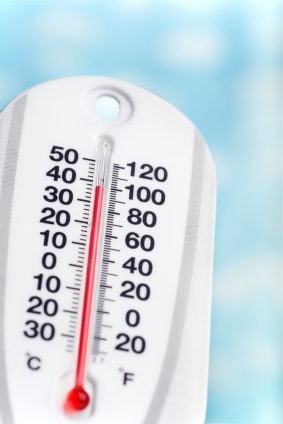 It can be a challenge exercising outdoors during the first hot days of spring or summer. Even working out at an intensity you’re comfortable with can fatigue you quickly when temperatures are high. Fortunately, your body has the ability to adapt to the demands heat places on your body. Through a process called heat acclimatization, your body makes adjustments and gradually adapts to exercising in the heat. How does this adaptation take place, and how long does it take?
It can be a challenge exercising outdoors during the first hot days of spring or summer. Even working out at an intensity you’re comfortable with can fatigue you quickly when temperatures are high. Fortunately, your body has the ability to adapt to the demands heat places on your body. Through a process called heat acclimatization, your body makes adjustments and gradually adapts to exercising in the heat. How does this adaptation take place, and how long does it take?
Heat Acclimatization: How Your Body Adapts to Exercising in the Heat
When you work out in a hot environment, your muscles tire faster, and exercise that normally would not seem overly strenuous feels more difficult. Fortunately, over time your body makes physiological adjustments that reduce the stress of working out in the heat.
Some of these changes include a reduction in heart rate and an increase in plasma volume. This increase in plasma volume helps your body store more heat without a rise in core body temperature. It also helps to maintain blood pressure and blood volume as the body loses fluids by sweating.
Another way your body adjusts to exercising in the heat is by becoming a better sweater. As you adapt to exercising in hot weather, sweating occurs earlier, and the rate of sweating is increased. This helps to reduce core body temperature, making your workout more pleasant and reducing the risk of heat-related illness. The amount of sodium and chloride lost in sweat is also reduced as part of the heat adaptation process.
When you work out in hot weather, your body also makes more heat shock proteins. These are special proteins produced during times of stress. They help to protect your cells against heat-related injury.
How Long Does It Take to Adapt to Exercising in the Heat?
Heat acclimatization is a fairly rapid process. The reduction in heart rate and increase in plasma volume begins within a few days, and usually within 5 days of exercising in the heat, your workout will feel easier. Your ability to sweat almost doubles within 10 days of exercising in the heat, and it becomes more dilute with less loss of sodium and chloride. You usually fully adapt to exercising in hot weather within 10 to 14 days.
The key to becoming heat acclimated is to raise your core body temperature so these adaptations can take place. You can partially heat acclimate in a cool environment by working out at an intensity greater than 50% of your V02 max for several weeks. This is enough to raise your core body temperature and cause your body to adapt to some degree. People who have a higher V02 max usually adapt to exercising in heat more rapidly.
Exercising in a cool environment even at an intensity that raises your core body temperature isn’t enough to completely acclimate your body to heat. The best way is to train in a hot environment. To be safe, start with ten-minute sessions, and gradually increase the duration of your workout to an hour or more. By doing this, your body should fully adapt to exercising in the heat in about 2 weeks. Always drink adequate fluids when exercising in hot weather. Once your body had adapted, it’s important to exercise in the heat during at least some of your workouts. You lose these adaptations rapidly once you return to exercising in a cooler environment.
The bottom line?
Be safe when working out in the heat, and know the symptoms of heat-related illness. Fortunately, heat acclimatization will make working out in hot weather easier and safer.
References:
Exercise Physiology. Fifth edition. McArdle, Katch, and Katch. 2001.
Exercise Physiology. Seventh edition. Powers and Howley. 2009.
Related Articles By Cathe:
Is Exercising in the Heat Less Effective?
How Exercise in the Heat Can Improve Performance
Does Exercising in Hot Weather Cause Earlier Fatigue?
When is the Best Time of Day to Strength Train?
Do You Burn More Calories Exercising in Cold Weather?

